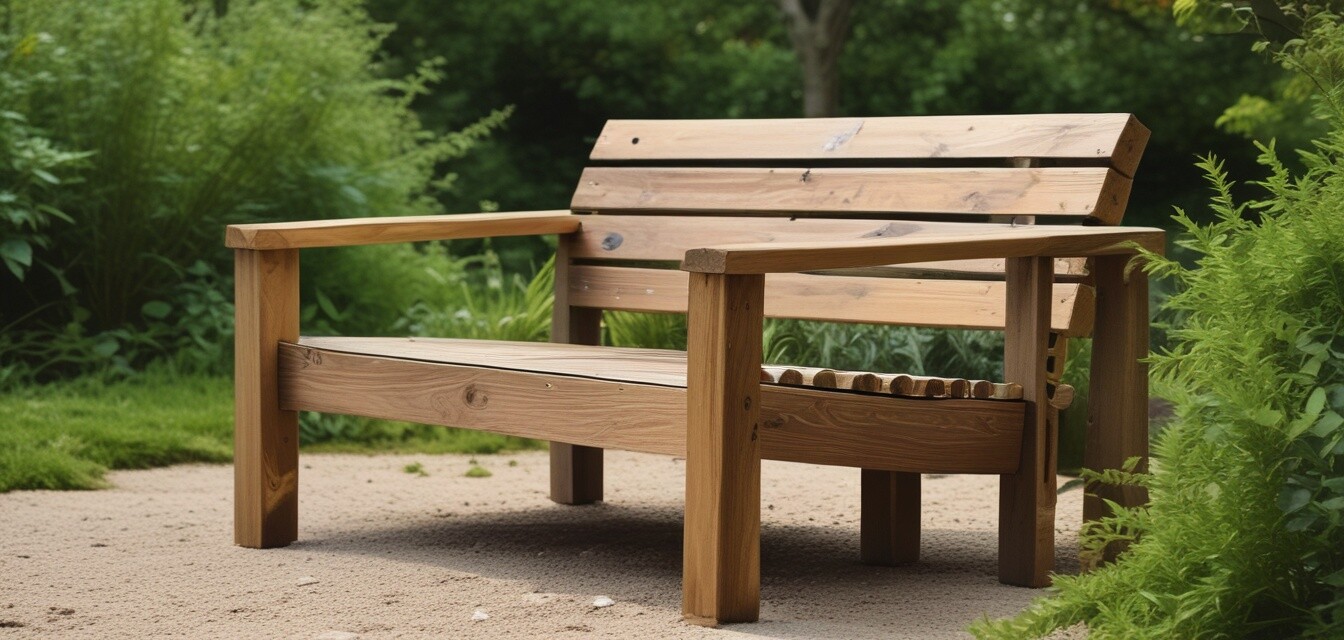
DIY Eco-Friendly Wooden Garden Furniture Projects
Key Takeaways
- Eco-friendly garden furniture can be made from reclaimed or sustainably sourced wood.
- Simple tools and materials can be used to create beautiful, functional furniture pieces.
- Building your own furniture minimizes waste and promotes sustainability.
- Maintenance and care are essential for extending the life of your wooden garden furniture.
- Explore various styles that suit your outdoor space and personal taste.
Creating your own eco-friendly wooden garden furniture not only enhances the beauty of your outdoor space but also supports sustainable practices. With the right materials and guidance, you can craft stunning furniture that aligns with your values and lifestyle. In this guide, we'll explore several DIY projects, tips, and essential information needed to make eco-friendly choices when building wooden garden furniture.
Why Choose Eco-Friendly Wooden Furniture?
Building furniture with environmentally-friendly materials drastically reduces the ecological footprint of your outdoor space. Here are some reasons to consider eco-friendly wooden furniture:
- Sustainability: Using reclaimed wood or sustainably harvested materials helps preserve forests.
- Durability: Well-made wooden furniture can last decades, making it a long-term investment.
- Natural Aesthetic: Wood brings warmth and character to your garden, enhancing its beauty.
- Customizable: DIY projects allow you to tailor pieces to your specific design preferences and needs.
Essential Tools and Materials
Before diving into DIY projects, having the right tools and materials is crucial. Here’s a list of what you’ll need to get started:
| Tools | Materials |
|---|---|
| Hand saw or circular saw | Reclaimed wood or sustainably sourced lumber |
| Drill and drill bits | Wood glue |
| Screwdriver | Wood screws |
| Measuring tape | Eco-friendly wood finish or sealant |
| Sanding block or electric sander | Clamps |
Fabulous DIY Projects to Try
1. Wooden Garden Bench
A garden bench is a perfect addition to any outdoor space. Here's how to create your own!
- Materials: Use reclaimed wood for durability.
- Instructions:
- Measure and cut two long pieces for the bench seat.
- Cut four legs that are sturdy and proportional to the seat.
- Assemble the frame using wood screws and glue for extra support.
- Sand any rough edges and apply an eco-friendly finish.
2. Planter Box
Enhance your garden with a wooden planter box that creates a beautiful display for your plants.
- Materials: Reclaimed wood is best, along with a liner material.
- Instructions:
- Cut the wood into equal lengths to create a box shape.
- Drill holes for drainage in the bottom.
- Assemble the sides and base, securing with screws.
- Add a liner before inserting soil and plants.
3. Folding Picnic Table
A space-saving picnic table is an excellent project for outdoor gatherings.
- Materials: Use treated wood for strength.
- Instructions:
- Construct a tabletop by joining several planks.
- Cut the legs and secure them with hinges for folding capability.
- Finish with sanding and an eco-friendly sealant.
Caring for Your Wooden Garden Furniture
Maintaining your wooden furniture is essential for its longevity. Here are some care tips:
- Regularly clean the furniture with a soft cloth and mild soap.
- Apply eco-friendly wood oils or sealants to protect against water damage.
- Store furniture in a dry place during harsh weather or cover it to prevent moisture buildup.
- Inspect periodically for any signs of wear or damage and repair as needed.
Conclusion
Creating your own eco-friendly wooden garden furniture is a rewarding way to enhance your outdoor space while supporting sustainable practices. Embrace your creativity, utilize reclaimed or responsibly sourced materials, and enjoy the satisfaction of handmade furniture. For additional resources and tips, check out our guides on sustainable practices and explore our collection of wood finishing products to keep your pieces looking their best.
Tips for Beginners
- Start with small projects to build confidence and skill.
- Follow instructions carefully and don't hesitate to seek help from online tutorials.
- Practice safety by wearing protective gear and ensuring a clean workspace.
Pros
- Promotes sustainability and environmentally friendly practices.
- Customization allows for unique designs tailored to personal taste.
- Can save money compared to buying ready-made products.
- Building furniture can be a rewarding and enjoyable hobby.
Cons
- Requires time and effort to complete projects.
- May need a learning curve if new to DIY woodworking.
- Initial investment in tools and materials can be high.